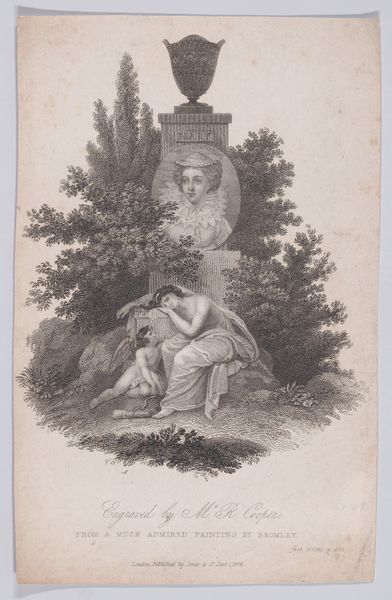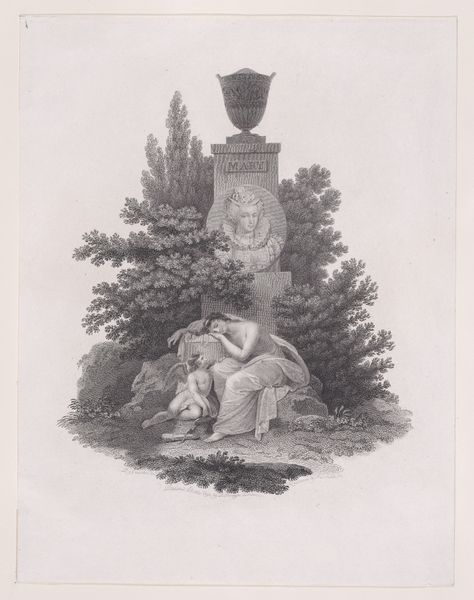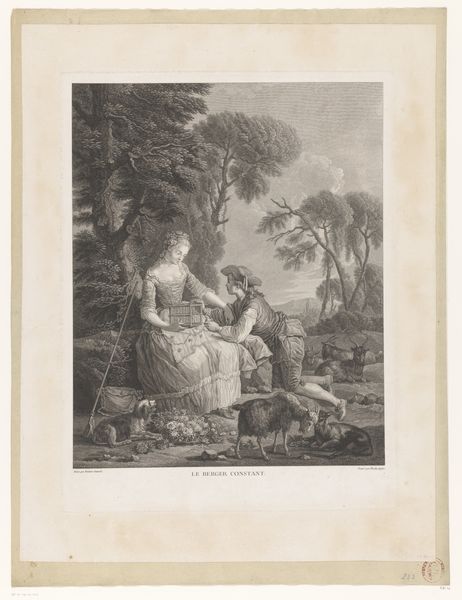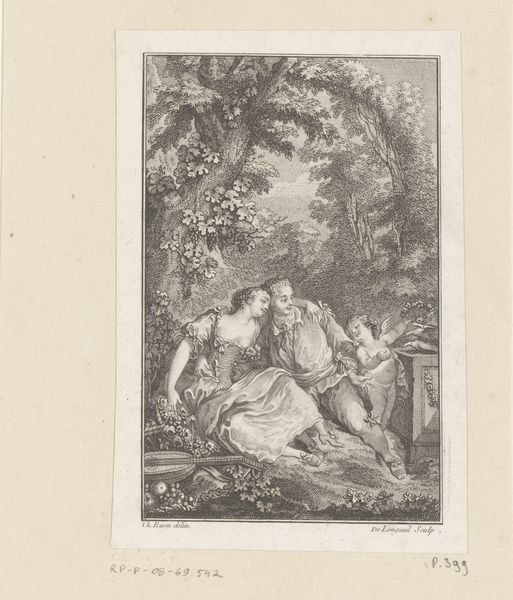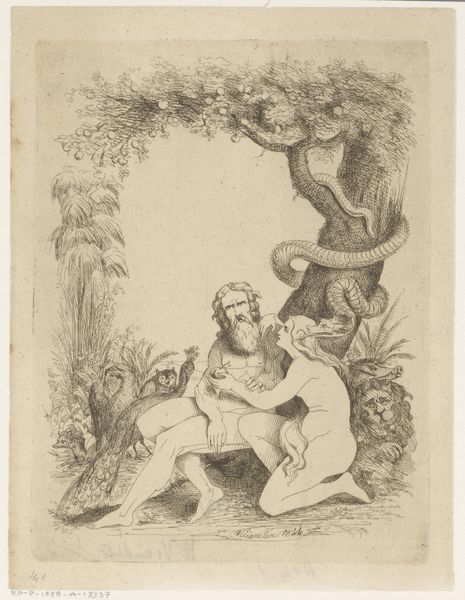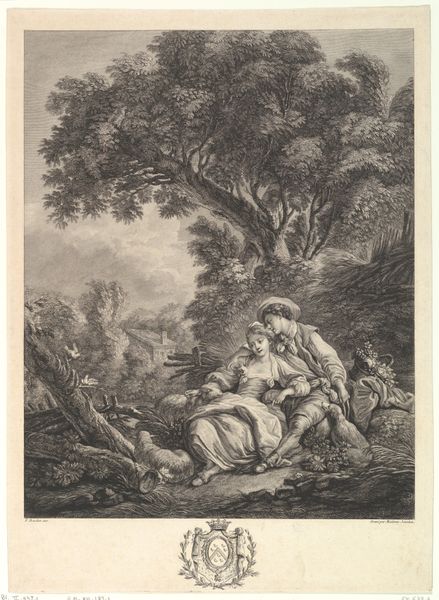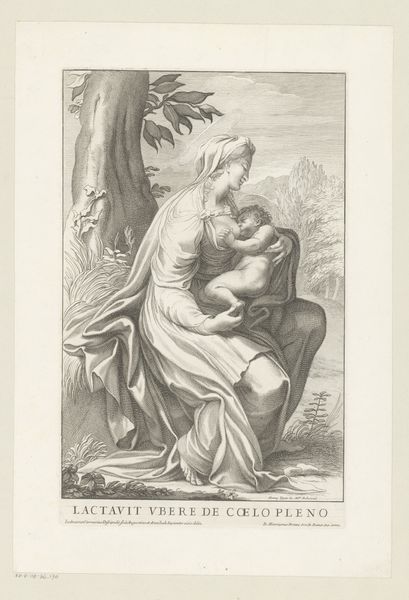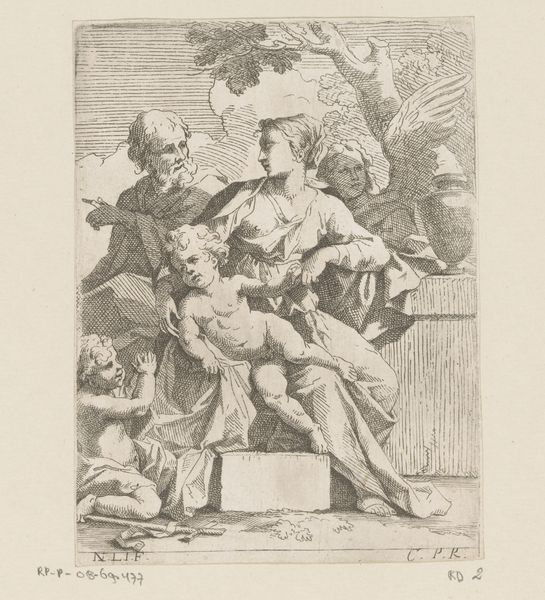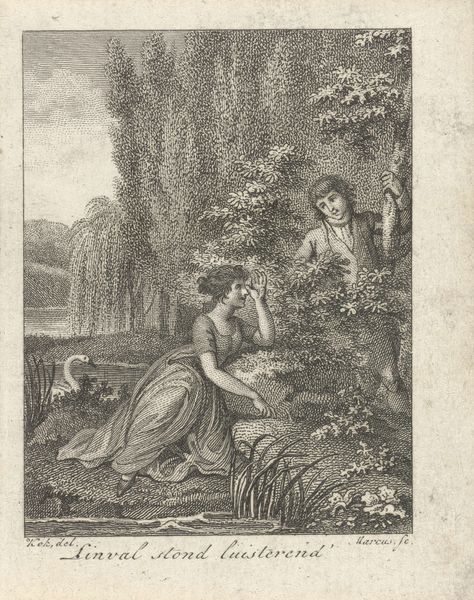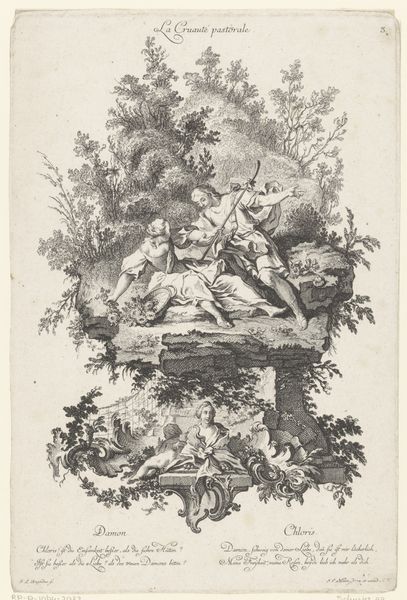
Monument of Mary, Queen of Scots, from "The History of England" 1824
0:00
0:00
drawing, print, engraving
#
portrait
#
drawing
#
allegory
# print
#
old engraving style
#
figuration
#
romanticism
#
line
#
history-painting
#
engraving
Dimensions: Sheet: 7 13/16 × 4 15/16 in. (19.9 × 12.6 cm)
Copyright: Public Domain
This print, "Monument of Mary, Queen of Scots," was created by William Bromley in the late 18th or early 19th century. It's made using an engraving process, where lines are incised into a metal plate and then printed, resulting in fine, precise details. Look closely, and you’ll see that Bromley has masterfully used this technique to create a scene of mourning. Mary’s portrait is elevated on a stone plinth, while a weeping woman and child lean against it. The fine lines of the engraving capture the textures of the stone, the flowing drapery, and the soft skin of the figures. Engraving was a skilled craft, demanding years of training. Prints like this one were widely circulated and consumed, allowing people to engage with historical and cultural subjects. The labor-intensive process of engraving contrasts with the relatively easy distribution of the final print, speaking to the changing modes of production and consumption in Bromley's time. Ultimately, the print allows us to consider how even seemingly traditional art forms are deeply embedded in wider social and economic contexts.
Comments
No comments
Be the first to comment and join the conversation on the ultimate creative platform.
